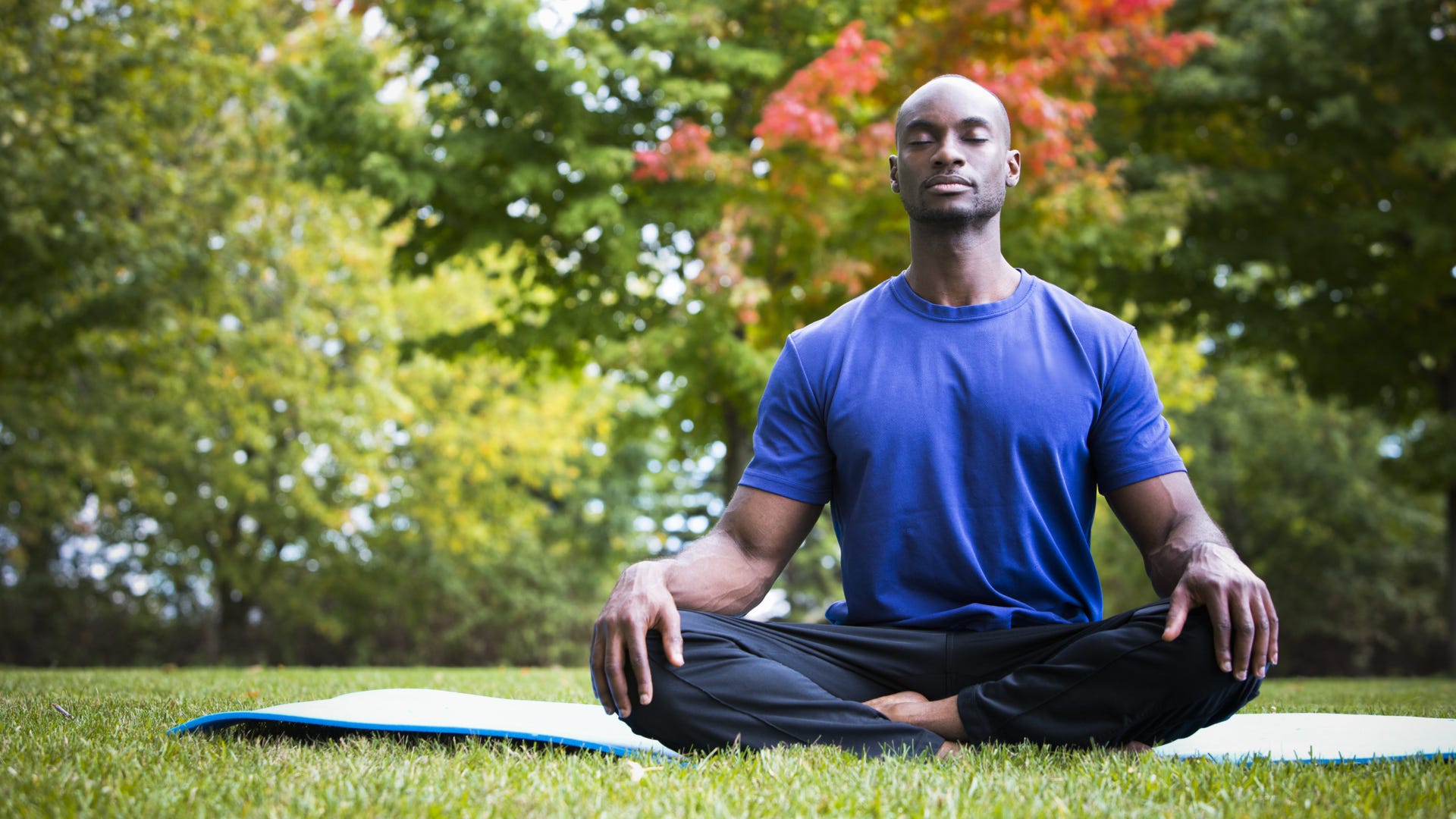
Kinhin is a Buddhist term for walking as meditation. It involves moving between periods that are devoted to sitting meditation. The practice is common in Mahayana, Theravada and other traditions. Many benefits can be derived from walking meditation. Walking is preferred by some practitioners over sitting. Even a short walk between two points could prove to be very helpful. This article explains the many benefits of walking for meditation. It is worth noting why Buddhists choose walking as a form or meditation.
Walking can be used as a meditation tool. You just need to find a calm spot and stand at one end of the path. Now, relax your senses and take a look at your body. Take note of the pressure on the bottom of your feet and other sensations as you walk. Repeat this throughout your walking. This will help you become more aware and calm. This type of meditation can be used if you feel overwhelmed. The links below provide more information on meditation through walking.

It is important to practice walking as meditation for only a short time. For a few minutes, stand still. Notice your body and breathe. Continue doing this for ten to twenty minutes. Although you can walk longer distances, it's important to keep your pace in line with your body. You'll notice a decrease in mind wandering as you walk. This doesn't mean your mind is wandering. It simply means your mind needs time for you to settle down.
Meditation is a form of walking that allows you to take a break and think. Notice the thoughts as they come to you. It may be helpful to learn from the experiences you have. Doing this will help you bring awareness to your everyday life. It is vital to pay attention to your surroundings. You can start to practice walking as meditation by following these steps.
When walking as meditation, be mindful of your body. Your body needs space to be relaxed and free of distractions, and walking in nature can help you do that. It is possible to be aware of your emotions and feelings, but still remain mindful of your body. You'll find yourself feeling more peaceful and at peace with yourself when you take your mind off your thoughts. It will surprise you how relaxed you feel walking as a meditation.

When practicing walking as meditation, you should pay attention to everything around you. Pay attention to your movements on the ground and your legs. Throughout your walking experience, you must be aware all the sensations that your body is experiencing. While you are walking, it is important to be mindful of your thoughts. This will help you to be more present. Mindfulness can be practiced by taking a walk. It is not meant to replace regular meditation sessions.
FAQ
Why is it important to live a healthy life?
Healthy living can lead to a longer, more fulfilling life. A healthy diet, regular exercise, good sleep habits, and stress management will help prevent diseases like heart disease, diabetes, cancer, and stroke.
A healthy lifestyle will also improve our mental health by helping us cope better with everyday stresses. Healthy lifestyles will increase self confidence, and make us look and feel older.
What is the most healthful lifestyle?
Healthy lifestyles include eating healthy food, regular exercise, good sleep, and avoiding stress. If you follow these guidelines, you will be able to lead a long and healthy life.
It's easy to start small with your exercise and diet. For example, if you want to lose weight, try walking for 30 minutes every day. Or, if you want to get more active, take up swimming or dancing. A Fitbit or Strava online program that tracks your activity can be joined.
Do I have to count calories?
Perhaps you are wondering what the best diet is for you. or "is counting calories necessary?" Well, the answer depends on several factors including your current health status, your personal goals, your preferences, and your overall lifestyle.
The Best Diet - Which One Is Right To You?
The best diet depends on me, my health, my goals, my preferences and my overall lifestyle. There are many different diets, some good and some not so good. Some work well for certain people while others don't. What should I do? How can I make the best decision?
These questions are addressed in this article. This article begins with a brief overview of the various types of diets that are available today. Next, we'll discuss the pros and cons for each type of diet. We'll then discuss how to choose which one is best for you.
To begin, let's take a quick look at the different types of diets.
Diet Types
There are three main types, low fat, high protein, or ketogenic diets. Let's look at each one briefly.
Low Fat Diets
A low fat diet is a diet that restricts the amount of fats consumed. This is done by reducing your intake of saturated oils (butter, cream cheeses, etc.). You can replace them with unsaturated oils (olive oil and avocados) For those looking to lose weight quickly, a low-fat diet is often recommended. This type of diet can lead to constipation and heartburn as well as indigestion. If a person doesn’t receive enough vitamins from their foods, this can lead to vitamin deficiency.
High Protein Diets
High protein diets are known to restrict carbohydrate intake and promote the consumption of proteins. These diets typically have more protein than other diets. These diets are designed to build muscle mass and help you burn more calories. One problem is that they might not be sufficient to provide regular nutrition. They are also very restrictive, so they might not be appropriate for everyone.
Ketogenic Diets
Ketogenic diets can also be known as keto diets. They are high in fat and moderate in protein and carbs. They are commonly used by athletes and bodybuilders, as they allow them train harder and more frequently without getting tired. To avoid side effects such as fatigue, nausea, headaches, or other unpleasant side effects, you must strictly adhere to their instructions.
Why does our weight change with age
How do you determine if your bodyweight is changing?
Weight loss happens when there is less muscle mass and more fat. This means that you must consume more calories than you use daily. The most common cause of weight loss is decreased activity levels. Other factors include stress, illness and pregnancy. Weight gain is when there are more calories than muscle mass. It occurs when people eat more calories than what they use in a given day. Overeating, increased physical activity and hormonal changes are all common reasons.
Our bodies lose weight because we eat fewer calories than we burn. When we exercise regularly, we increase our metabolism rate which burns off more calories throughout the day. However, this doesn't mean that we'll necessarily get thinner; what matters is whether or not we're losing fat or gaining muscle. If we're burning more calories that we consume, we'll lose weight. But, if we consume far more calories than what we burn, then we actually store them as fat.
As we age, we become less agile and don't move as often. We also tend eat less than we used to. This is why we tend to gain weight. On the flip side, we tend to have more muscle mass so we look bigger than we really are.
There's no way to tell how much weight you've lost unless you weigh yourself every week. There are many options for measuring your weight. You can gauge your waist size, hips, hips, thighs and arms. Some people prefer using bathroom scales and others prefer tape measure.
To track your progress, weigh yourself once a week. Measure your waistline once per month. To track your progress, you can also take photos every few months of yourself to see how far it has come.
You can also find out how much you weigh by looking up your height and weight online. If you're tall at 5'10", and weigh 180lbs, your weight would be 180.
Statistics
- WHO recommends reducing saturated fats to less than 10% of total energy intake; reducing trans-fats to less than 1% of total energy intake; and replacing both saturated fats and trans-fats to unsaturated fats. (who.int)
- The Dietary Guidelines for Americans recommend keeping added sugar intake below 10% of your daily calorie intake, while the World Health Organization recommends slashing added sugars to 5% or less of your daily calories for optimal health (59Trusted (healthline.com)
- WHO recommends consuming less than 5% of total energy intake for additional health benefits. (who.int)
- This article received 11 testimonials and 86% of readers who voted found it helpful, earning it our reader-approved status. (wikihow.com)
External Links
How To
What does "vitamin" actually mean?
Vitamins are organic compounds naturally found in food. Vitamins help us absorb nutrients from foods we eat. Vitamins are not made by the body, so they must be obtained through food.
Two types of vitamins exist: water-soluble vitamin and fat-soluble vitamin. Water-soluble vitamins dissolve quickly in water. Vitamin C,B1(thiamine), B2 (2riboflavin), and B3 (3niacin), as well as vitamin C,B1, B2 (riboflavin), and B3 (niacin), vitamin B6 (pyridoxine), vitamin folic acid (biotin), pantothenic, and choline are examples. The liver and fat soluble vitamins are stored within the liver and in fatty tissue. You can find vitamin D, E K, A, beta carotene, and other fat-soluble vitamins.
Vitamins are classified based on their biological activity. There are eight major categories of vitamins.
-
A - vital for healthy growth.
-
C is important for nerve function and energy production.
-
D - Vital for healthy bones and teeth
-
E is required for good vision and reproduction.
-
K - essential for healthy muscles, nerves, and bones.
-
P – vital for building strong bones.
-
Q - aids digestion, absorption and absorption iron
-
R - necessary for making red blood cells.
The recommended daily intake (RDA), of vitamins varies with age, gender and physical condition. The U.S. Food and Drug Administration sets RDA values.
For adults over 19, the RDA for vitaminA is 400 micrograms per daily. Pregnant mothers need 600 micrograms per days because it is vital for the development and growth of their baby. Children ages 1-8 require 900 micrograms per day. For infants younger than one year, 700 micrograms are required daily. However, this number drops to 500 micrograms each day for children aged 9-12 months.
Children aged 1-18 years need 800 micrograms daily, while children overweight require 1000 micrograms per days. Children who are severely obese or underweight will need 1200 micrograms each day.
Children ages 4-8 years who have been diagnosed with anemia need 2200 micrograms per day of vitamin C.
Adults over 50 years of age need 2000 micrograms per day for general health. Mothers who are pregnant, nursing, or have a high nutrient need will require 3000 micrograms a day.
1500 micrograms are required daily by adults over 70 because they lose approximately 10% of their muscle each decade.
Women who are pregnant and lactating need more nutrients than the RDA. Pregnant women need 4000 micrograms per dayduring pregnancy and 2500 micrograms per day after delivery. Breastfeeding mothers need to consume 5000 micrograms every day when breastmilk has been produced.